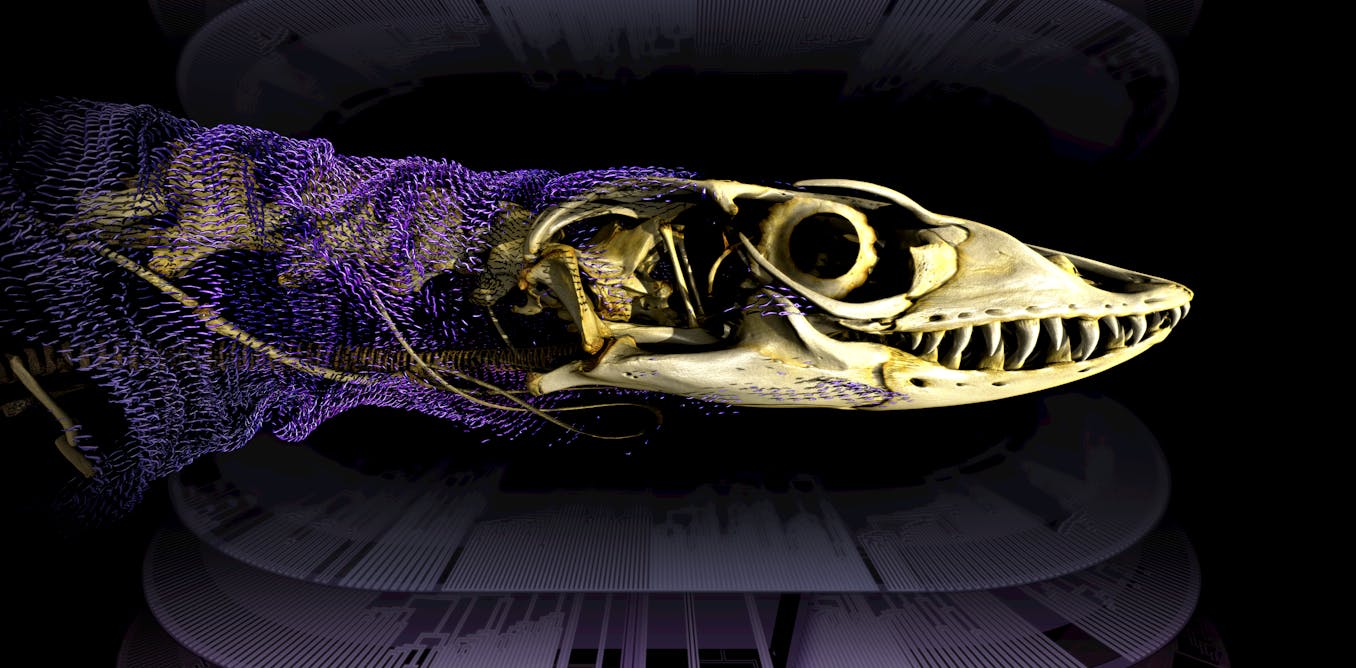As Albert Einstein famously said, “Insanity is doing the same thing over and over again and expecting different results.” Except there’s no evidence that he said or wrote those words. The earliest evidence for this quote comes from a 1981 newspaper article reporting on an Al-Anon meeting. That’s more than a quarter century after the acclaimed physicist’s death.
Einstein was, of course, an insightful thinker who made many clever and profound observations about the nature of the universe and humankind. But going by social media posts and the inspirational poster industry, you’d think he was a one-man proverb machine to rival, well, Proverbs for pithy wisdom.
Here are a few other Einstein quotes you may recognize:
- “Imagination is everything. It is the preview of life’s coming attractions.”
- “Every now and then, a man’s mind is stretched by a new idea or sensation and never shrinks back to its former dimensions.”
- “They said it couldn’t be done, but the fool didn’t know it, so the fool went ahead and did it.”
- “Humanity invented the atom bomb. No mouse in the world would think of building a mousetrap.
- “The distinction between past, present, and future is only a stubbornly persistent illusion.”
Of these, the only one with evidence to support its attribution to Einstein is the last, a version of which was found in a letter he wrote in 1955.
Einstein is someone Garson O’Toole (a pen name for Gregory Sullivan) calls a “quotation magnet” or “flypaper figure.” These are people who attract misquotations with the same gravitational pull of a sun collecting satellites. These citation stars include such illustrious figures as Mark Twain, Oscar Wilde, Maya Angelou, Winston Churchill, Dorothy Parker, and Benjamin Franklin — names O’Toole is well-acquainted with.
He runs Quote Investigator, a website dedicated to uncovering the truth about quotations and locating their earliest verifiable usage. He may also be the unrecognized holder of the world record for writing the sentence, “There is no substantive evidence that Einstein wrote or spoke this statement” more than anyone else.
I recently corresponded with O’Toole over email to discuss why figures like Einstein become quotation magnets, how these misattributions occur and cement themselves within our cultural consciousness, and how one very persistent Chinese curse ultimately turned into a blessing for quote investigating.
The curious case of the Chinese curse
O’Toole began investigating quotes in the 2000s. At the time, he was writing an article that explored the research possibilities of the Google Books project, which uploads scans of books and periodicals from major libraries. Serendipitously, O’Toole recalls, he encountered this quote around the same time:
May you live in interesting times.
Beyond being semantically dramatic, the quote is striking because it isn’t ascribed to an individual. Instead, it’s advertised as an ancient Chinese curse. The idea is that what seems like a blessing at first — who wants to live a boring, uneventful life? — becomes a jinx when you realize that “interesting times” are typically punctuated by wars, pandemics, and other social upheavals.
O’Toole decided to look into the quote and noticed that Wikipedia’s earliest cited source was a 1950s science fiction short story, one neither ancient nor Chinese. He decided to dig deeper using the Google Books database. He uncovered several promising leads and was eventually able to track down an occurrence of the quote in a 1944 book in a nearby library. Titled The American Character, the book’s author claims it is “designed to make more intelligible to the British public certain American principles and attitudes.” First of all, good luck with that. And second, still not an ancient Chinese source.
O’Toole detailed his findings in a 2007 article on TeleRead, a website dedicated to news about e-books. The article was discovered by Fred Shapiro, the associate director for collections and special projects at Yale Law School, who noted in the comments that his work cited an even earlier reference dating back to 1939.
A minor muddle, but one that led O’Toole to an early quote-investigating lesson: “Always consult the most recent edition of Shapiro’s reference work,” he writes (half) jokingly.
Still, the experience led O’Toole to start Quote Investigator in 2010, and his research skills steadily improved. His current entry for “May you live in interesting times” not only sports strong evidence for an even earlier citation — a March 1936 newspaper report in The Yorkshire Post — but lists several Chinese quotes that may have served as precursors for the backhanded blessing.
There is, for instance, this 17th-century quote from the Ming Dynasty-era story “The Oil-Peddler Wins the Queen of Flowers”:
Truly, better be a dog in days of peace
Than a human in times of war!
Today, O’Toole’s investigations are referenced by journalists at The New York Times, The Washington Post, and The Guardian. They’ve also been a godsend to my own here at Big Think. Even the introduction to Shapiro’s latest edition gives this lovely hat tip: “O’Toole’s brilliant researches have greatly aided The New Yale Book of Quotations, which has many dozens of entries reflecting Quote Investigator findings.”
Investigating quote-unquote “quotes”
O’Toole’s research over the years has led him to recognize three qualities that turn certain figures into quotation magnets.
First, the person is historically significant. Abraham Lincoln led the United States through the tumultuous Civil War. Mohandas Gandhi’s nonviolent independence campaign inspired civil rights movements worldwide. Both are total quotation magnets.
As we’ve seen with Einstein, the second quality is that the person already has a reputation for crafting wise, witty, profound, and insightful adages. And finally, the person should embody an archetype that functions as a kind of effect trigger. Mark Twain’s wittiness primes the reader for a humorous aphorism, while Churchill’s connection with great speeches prepares them to be inspired.
“The domain of quotations is highly competitive,” O’Toole wrote. “Popular sayings and influential figures change over time. Hence, there is an evolutionary pressure that operates on the selection and replication process.”
He continued, “When an astute statement attributed to a minor figure is reassigned to a major name, it instantly becomes more fascinating, more memorable, and more transmissible. The new combination is selected and replicated at a much higher rate.”
Given that, you may wonder whether there are people who deliberately misattribute quotes to give their social media posts or book epigraphs more gravitas. And something like that does happen on occasion. As an example, O’Toole points to this quote often attributed to Christopher Columbus:
And the sea will grant each man new hope, as sleep brings dreams of home.
As you’ve already guessed, O’Toole couldn’t find evidence that Columbus spoke or wrote those words. The earliest evidence for the quote is also its most famous recitation: the lines spoken by Sean Connery in the finale of the film The Hunt for Red October (1990).
Screenwriter Larry Ferguson penned the quote specifically for the film’s ending and slapped Columbus’s name on it; neither he nor director John McTiernan were trying to be deceptive. In fact, McTiernan openly discusses the fabrication on the DVD commentary track: “Larry wrote the poem that Sean quotes at the end. Obviously, Christopher Columbus never wrote anything like that, but the gimmick works.”
As O’Toole points out, “The emotional impact of the scene was heightened by the inclusion of the counterfeit quotation.” Because Columbus embodies the archetype of the voyage to the Americas — a journey with symbolic significance for the movie’s themes and its character’s journeys — the device works. And because it’s a memorable line purported to be spoken by a historical figure, it took on a life beyond the script.
Much more commonly, though, misattributions result from honest mistakes. Writers, orators, or party guests share a quote they love or feel fits the moment, but in the process, ascribe the quote to the wrong person or misremember some other important detail. O’Toole shared an example:
People sleep peacefully in their beds at night only because rough men stand ready to do violence on their behalf.
This quote has been attributed variously to Rudyard Kipling, George Orwell, and Winston Churchill, but the earliest reliable match O’Toole could find appeared in a 1993 Washington Times column. Given that date, none of those men would have been alive to pen the words, and the actual author proved to be film critic and essayist Richard Grenier.
Here’s the original, as cited on Quote Investigator, “As George Orwell pointed out, people sleep peacefully in their beds at night only because rough men stand ready to do violence on their behalf.”
Tracing the quoted history, O’Toole believes that Greiner was summarizing a view he ascribed to Orwell, and later commentators mistakenly placed it within quotation marks. Just like that, a paraphrase evolved into a passage. As with Columbus, the clout of Orwell’s name, the fact that he made similar statements, and his place as a political archetype in our culture made the quote hyper-replicable.
Here’s another example:
Definition of a classic — something that everybody wants to have read and nobody wants to read.
This is a famous quote from Mark Twain, and in 1900 while delivering a speech at the Nineteenth Century Club in New York, he actually said those words. But during the speech, Twain made it very clear that he was citing a clever remark he heard from Caleb Thomas Winchester, a professor of English literature at Wesleyan University, Connecticut.
“Twain carefully credited Winchester, but in the domain of quotations, the name of Winchester is largely forgotten, and Twain almost always receives credit for this bon mot,” O’Toole writes.
One more quote for the road:
The cure for boredom is curiosity. There is no cure for curiosity.
Dorothy Parker often receives credit for this one, and the poet jotted many well-known quips about curiosity. However, the earliest evidence for the quote O’Toole could find was a December 1980 issue of Reader’s Digest. There, it appeared in the “Quotable Quotes” column ascribed to one Ellen Parr.
How did it get mixed up with Parker? Because the list was written in alphabetical order, Parker’s quotable quote appears directly above Parr’s. Given the proximity and the closeness of names (Parr vs. Parker), O’Toole reasons that an inattentive reader simply misattributed which quote belonged to which person.
If you’re curious, Parker’s actual quote from the list: “The two most beautiful words in the English language are: ‘Cheque enclosed.’” (Which is also quite good.)
Should I quote you on that?
And so it goes. While some misquotes are fabricated, most are simply the result of a large-scale game of cultural telephone. Despite our best intentions and efforts, communication can be imprecise and our memories faulty. Luckily, the written word offers a kind of evolutionary record that investigators like O’Toole can use to trace the lineage of these culturally significant quotes and give their authors their proper due — or, at least, get us closer to that answer.
“Overall, quotation research is enormously rewarding because one encounters a series of entertaining mysteries. Sometimes the mystery is solved, and progress is made even when the solution remains uncertain,” O’Toole writes.
Modern technologies aid in reconstructing that lineage thanks to the breadth and accessibility of high-quality databases. However, if used thoughtlessly, those same technologies can also provide people with a false sense of security in the answers given.
As O’Toole notes, misquotations seem to pop up online more frequently since he started in 2010. A person struggling to remember a quote or expression will often plug it into Google and select the first or second link. Those links often lead them to websites like Goodreads or BrainyQuote, which are chockablock with misattributed quotes. Not bothering to research any deeper, the person simply shares the misattributed quote in a text to a friend or followers on Facebook, and it replicates.
In this game of cultural telephone, the internet has transformed our role from being just one link in the chain to that of full-fledged operators. And AI may make this worse.
As a test, I asked popular chatbots who uttered the quotes found in this article. Each one gave me a popular misattribution with only the occasional nod that it may be inaccurate. The only exceptions were Perplexity AI — which directly cites Quote Investigator as a source — and ChatGPT — which told me the Columbus quote came from the poem “The Old Man and the Sea” written by John Steinbeck. (A citation so wrong that it would take an entire Quote Investigator post to unpack.)
That’s just the start of how AI may muddy the referential headwaters. As O’Toole points out: “In the past, a high-quality audio or video recording of a person delivering a quotation was powerful evidence. Now, it is possible to create a fraudulent audio or video in which a famous person speaks almost any scripted line. It is also possible to create realistic-looking digital newspaper clippings. This means tracing the provenance of evidence is essential.”
As such, even if quotes aren’t your thing, they are still an important, and often playful, reminder that we need to be thoughtful of what information we share — and ever-mindful that we can trace its origin to a trustworthy source.
For quotes, O’Toole turns to databases with a history of reliability, such as Google Books, Newspapers, ProQuest, JSTOR, and The British Newspaper Archive. The Internet Archive has proven an invaluable resource for keeping dated web pages online and accessible. His research has also led him to learn the art of crafting search queries and the importance of occasionally setting down the screen to go to the library or have a conversation with a librarian, expert, or well-informed colleague.
Of course, depending on what you’re sharing, the tools and techniques will vary. But it is the mindset O’Toole brings to his detective work that is key in separating the valid from the fabricated or mistaken in our information-overloaded world.
Because as someone who definitely wasn’t Einstein once said, “Insanity is plugging the same words into Google over and over again and expecting different search results.” (Or something like that.)
This article Einstein didn’t say that: How viral misquotes evolve and replicate is featured on Big Think.

The post “Einstein didn’t say that: How viral misquotes evolve and replicate” by Kevin Dickinson was published on 10/28/2024 by bigthink.com



































Leave a Reply